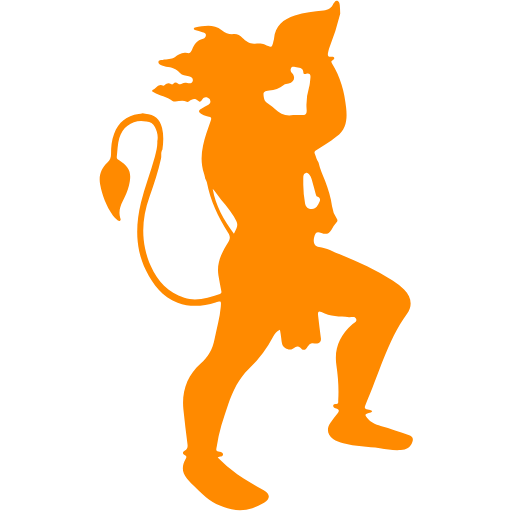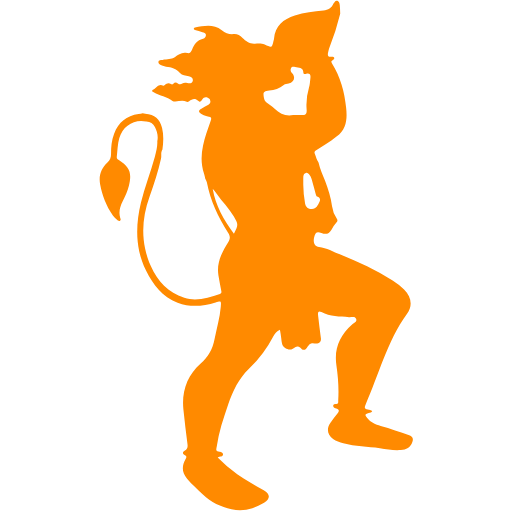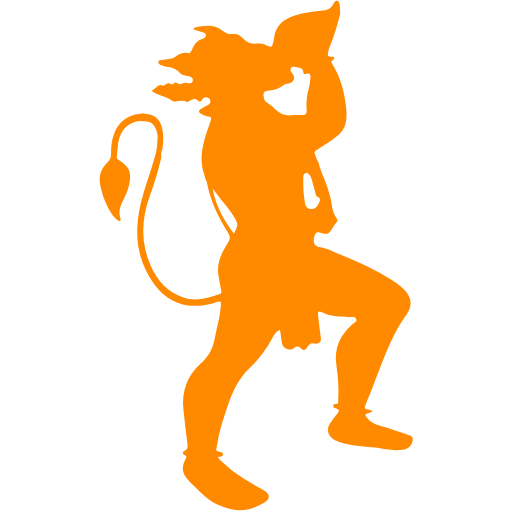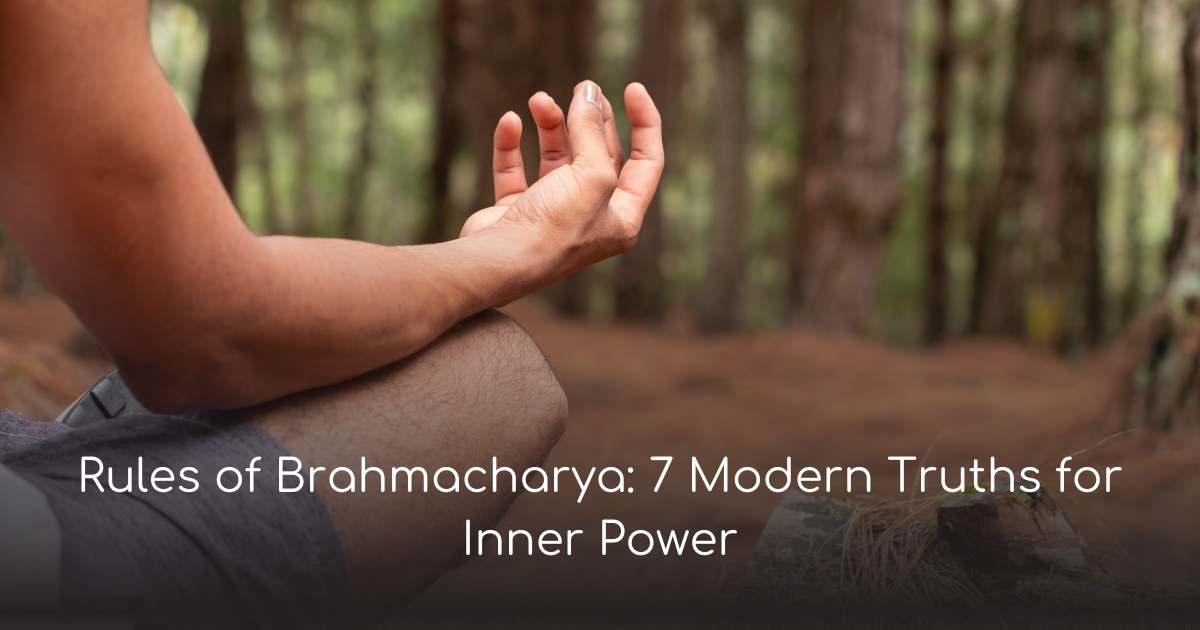om in hindu rituals: divine key to unlock spiritual power
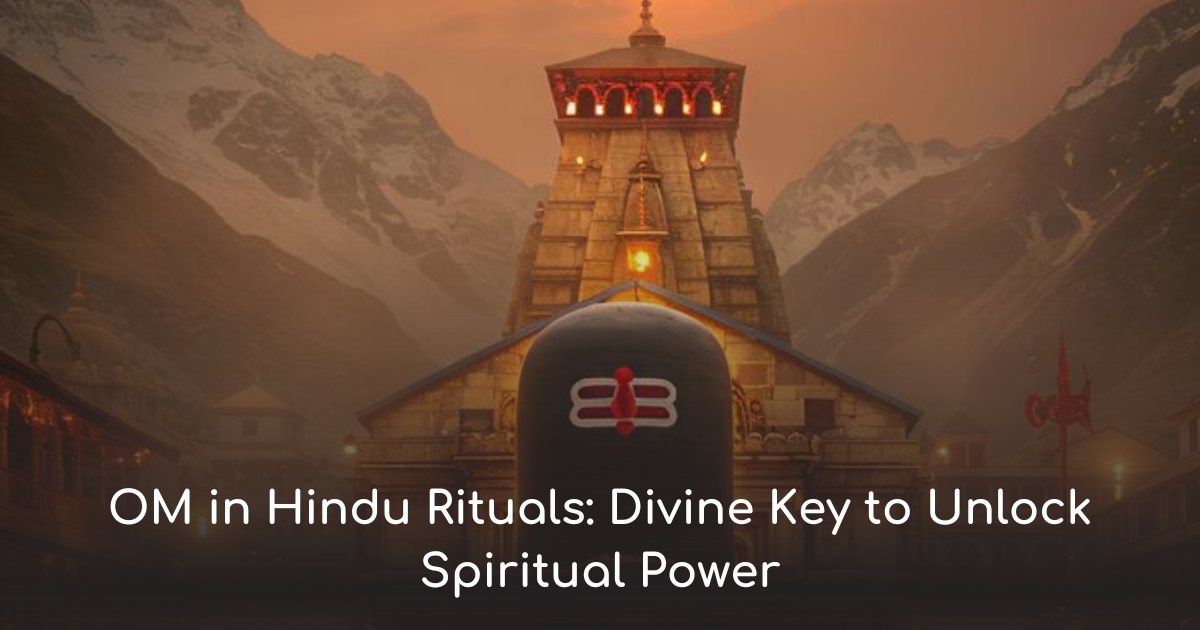
OM in Hindu Temples and Rituals reveals why every Aarti, Puja & Yagya begins with OM. Discover the ancient truth & spiritual science behind the sound.
🪔 OM in Hindu Temples and Rituals – A Sacred Prelude to Every Prayer
Have you ever noticed how every puja, aarti, or temple ceremony starts with one deep, resounding sound—OM?
Not a single mantra begins without it. Not a single priest chants without invoking it. Not a single ritual is considered “complete” unless OM sanctifies it.
But why?
Why is this one syllable—just two letters—so universally revered in every corner of Sanatan Dharma?
Why do temple bells echo it, yajna flames rise to it, and even the softest prayers begin with it?
The answer lies not in superstition or blind tradition—but in spiritual science, scriptural truth, and the eternal vibration of Dharma.
Welcome to this section of this sacred exploration of OM in Hindu Temples and Rituals — a journey into why every Sanatan ritual begins with the sound of the soul.
Let’s walk together, dear seeker. 🧘♂️
📖 Vedic Origins: OM as the Sound of the Universe
The Rigveda, the Upanishads, and even the Bhagavad Gita do not just mention OM—they revere it.
"Om iti etad akṣaram idam sarvam"
— Mandukya Upanishad, Verse 1
(“OM—this syllable is all this.”)
OM is called Pranava—the eternal vibration. It is not just sound. It is the source of all creation.
In Hindu temples and rituals, it plays four essential roles:
-
It sanctifies the space
-
It aligns the devotee with the divine
-
It awakens the prana within the ritual
-
It connects every mantra back to Brahman
Thus, chanting OM before any act of worship is not tradition—it is activation.
🔥 Why Rituals Begin with OM: The Spiritual Science
✨ 1. OM in Aarti: Lighting the Inner Flame
Every aarti in a Hindu temple starts with OM. Whether you are waving a ghee diya or singing a devotional bhajan, OM purifies the moment.
-
OM in Aarti is not just recitation—it is a call to the Divine Light.
-
The flame represents jnana (wisdom). OM invites that light to enter not just the temple, but the hearts of those present.
“When the priest chants OM and waves the aarti, the deity doesn't just watch — the deity responds. OM is the spiritual Wi-Fi that connects us.”
It’s no surprise that the most powerful aartis—from Om Jai Jagdish Hare to Om Namah Shivaya—begin or end with OM.
✨ 2. OM in Puja: Invoking the Divine Within
During Puja, every item—from flowers to sweets to sandalwood paste—is offered after chanting OM.
-
“OM pushpam samarpayami” – I offer this flower with OM
-
“OM gandham samarpayami” – I offer this fragrance with OM
Why?
Because OM in Puja is not about the offering—it's about the intention behind the offering.
When OM is chanted, your personal ego dissolves and the offering becomes divine.
✨ 3. OM in Yagya: Igniting Cosmic Fire
In Vedic Yagyas, OM is used as a prefix to every mantra. It is chanted before invoking Agni, Soma, or any deity. Example:
“OM Agnaye Swaha”
This is not just a chant—it is an invocation of divine energies into fire.
Fire without OM is just heat.
Fire with OM becomes transformation.
🛕 The Temple as a Living Body—and OM as its Heartbeat
Every Hindu temple is designed like the human body:
-
Garbha Griha (sanctum) = heart
-
Shikhar (temple tower) = head
-
Mandap (pillars) = limbs
-
Bells and chants = breath and heartbeat
And what sustains this divine body?
OM.
The temple breathes because OM is chanted.
The energy flows because OM is present.
It’s the soul of the temple—a living presence.
That is why OM in Hindu Temples and Rituals is more than decorum—it is Divine Design.
🧬 OM and the Laws of Vibration: Science Meets Spirituality
Modern physics now supports what the Vedas taught millennia ago—everything is vibration.
-
OM vibrates at 432 Hz, which is in harmony with the natural frequency of the earth.
-
Sound scientists say chanting OM creates a meditative alpha state in the brain.
-
Ancient rishis knew this. That’s why they prescribed OM as the first sound of all rituals.
Chanting OM is like tuning your soul to the frequency of the cosmos.
So when OM is chanted in aarti, puja, or yagya—it does not just “begin” the ritual.
It activates the ritual.
If this is your first time reading about OM’s divine power, you’ll love our foundational post:
👉 OM: Powerful Truths That Will Elevate Your Soul in 2025
It reveals how OM connects to your soul, mind, and cosmic purpose—perfect for seekers beginning their journey.
🔮 Soulful Reflection
“Before you bow to the deity, bow to OM.
Because before God hears your prayer, OM prepares your soul to pray.”
Whether you're in a temple, at home, or even within your thoughts — never skip OM.
It is not a syllable. It is a soul-state.
OM in Hindu Temples and Rituals — The Flame, The Fire, and The Sacred Sound
In the first section, we explored how OM serves as the eternal initiator of Hindu rituals—whether through aarti, puja, or mantra.
But OM’s sacred presence doesn’t stop at just invocation.
It infuses the ritual itself, charges the space, and transforms the offering into a vehicle of spiritual connection.
Now let’s dive into how OM moves through the body of ritual—especially in Puja, Yagya, and temple architecture—and why it’s not merely tradition, but transmission of divine energy.
🛕 OM in Puja: Awakening the Sacred in the Seeker
A Hindu puja isn’t just a set of steps. It’s a meditative journey where the deity is invoked, honored, and merged into.
And OM is the first breath of that journey.
✨ Common OM Uses in Daily Puja:
-
“OM Dhyaanam Samarpayami” – I offer meditation
-
“OM Snanam Samarpayami” – I offer sacred bath
-
“OM Vastra Samarpayami” – I offer clothes
Each act is channeled through OM, because it becomes the carrier of intention.
Without OM, the flower is just a flower.
With OM, it becomes a symbol of bhakti (devotion) and sattva (purity).
“OM sanctifies the sankalpa—the soul’s intention—and gives it wings to reach the divine.”
🔥 OM in Yagya: Fueling the Cosmic Conversation
📜 Scriptural Insight:
“Agnihi Poorvadevatam—Agni is the first among gods.”
— Yajurveda
And Agni listens to OM first.
How OM Works in Yagya:
-
Every offering (Ahuti) is preceded by OM
-
Special bija mantras like OM Aim Hreem Kleem Swaha amplify the cosmic transmission
-
Yagya flames are believed to carry the OM vibration to the higher lokas (planes)
OM is the fire’s soul frequency—it tunes the sacrificial energy to align with divine will.
🔥 Example: Agni Sukta’s Invocation
“OM Agnaye Swaha” – Salutations to Agni through OM
🔥 OM activates
🔥 Agni receives
🔥 The cosmos responds
🔔 OM in Temple Bells: Why Bells Echo OM
Have you ever walked into a temple and heard the ring of a bell just before aarti or darshan?
That sound is not random—it is engineered.
Most Hindu temple bells are tuned to OM’s vibration (~432 Hz).
They’re meant to:
-
Stop your mental chatter
-
Alert your spiritual awareness
-
Tune your inner frequency to the divine resonance of OM
🧠 Scientific Note:
OM resonates with the brain’s alpha state—ideal for meditation, prayer, and memory.
Just one OM-toned bell ring can:
-
Calm the nervous system
-
Increase presence
-
Prepare the mind for worship
“Temple bells don’t just echo sound — they echo Sanatan truth. And that truth begins with OM.”
🌀 OM in Mandir Architecture: Energy, Sound & Geometry
Ancient Hindu temples were never randomly built.
They were aligned with cosmic energies, based on Vastu Shastra, and vibrational geometry — and at the center of this alignment is OM.
Key Symbolic Elements:
-
The garbhagriha (sanctum) is the space of silent OM
-
The pradakshina path represents the OM spiral
-
The shikhara (spire) points upward, just like OM’s upward intonation
Every OM chanted inside such a temple reverberates perfectly.
Not just because of acoustics—but because of devic energy design.
“Temples are OM-shaped — not just in sound, but in soul.”
🧘♂️ OM and Prana: How the Breath Becomes a Ritual
You don’t need a bell, flame, or even an idol to invoke OM.
Your breath is the altar.
Your heart is the priest.
And OM is the offering.
When chanted during aarti or puja, OM:
-
Synchronizes breath with divine rhythm
-
Activates the kundalini energy
-
Bridges mantra and meditative silence
“OM is where mantra ends—and meditation begins.”
This is why many yogis and acharyas teach that even without elaborate rituals, chanting OM with breath and bhakti is the most potent worship.
To deepen your understanding of the subtle difference between OM and AUM, and when to use each:
👉 OM vs AUM: Powerful Secrets to Awaken Your Inner Light
Discover:
-
Phonetic differences
-
Chakra-specific effects
-
Right usage in meditation and rituals
🌺 Reflection: Ritual is not routine—it is remembrance
“Ritual is not about superstition—it’s about synchronization.”
“OM is not a ritual requirement—it is a soul alignment.”
When you chant OM, the bell responds.
When the priest chants OM, the fire dances.
When the whole temple echoes OM—the universe hears your prayer.
This is why OM in Hindu Temples and Rituals is not optional—
It is essential.
It is Sanatan.
🔜 In the next section, we’ll explore:
-
How OM unites different deities and sects
-
Daily OM practice in homes and temples
-
FAQs about OM use in rituals
-
Message to our valuable readers and disclaimer
OM in Hindu Temples and Rituals – Uniting Devotion, Deities & Dharma
So far, we've explored how OM energizes and sanctifies every aarti, puja, and yagya in Hindu tradition.
But its power goes even deeper — beyond rituals, OM is the common thread that binds every school of worship within Sanatan Dharma.
Whether you chant “OM Namah Shivaya,” “OM Namo Bhagavate Vasudevaya,” or “OM Aim Hreem Kleem,” one truth remains:
All mantras begin with OM because all paths lead to Oneness.
🛕 OM and the Universality of Deity Worship
🔱 OM in Shaivism
In Shaiva traditions, OM is seen as Shiva’s own breath — the sound of stillness and silence.
Chants like “OM Namah Shivaya” begin with OM to establish Shiva not just as the deity, but as consciousness itself.
🌼 OM in Vaishnavism
Vaishnav chants like “OM Namo Narayanaya” begin with OM to salute the Supreme Preserver, invoking Vishnu’s expansive and sustaining energy.
🔥 OM in Shaktism
In Devi mantras like “OM Aim Hreem Kleem Chamundaye Viche,” OM initiates the Shakti flow — a call to the Divine Feminine’s power of transformation.
“OM is not a sectarian sound. It is the eternal syllable that unites Shiva, Vishnu, and Shakti in one cosmic vibration.”
🧘 OM as Daily Practice – Bring the Temple Home
You don’t have to wait for a priest or a festival to experience OM.
By chanting OM daily, even for 3–5 minutes, you bring temple energy into your body, home, and thoughts.
Simple Daily OM Ritual:
-
Light a diya 🪔
-
Sit in silence for 2 minutes
-
Chant OM aloud 9, 27, or 108 times
-
Close with gratitude to Sanatan Dharma
This simple practice clears your mind, aligns your aura, and prepares your heart for the day.
📿 The Gurukul Way – How OM Was Taught to Children
In ancient Gurukul systems, children began their studies with the chant of OM.
-
It was chanted before writing, reading, or reciting
-
It centered the child’s prana and intellect
-
It created discipline of attention and purity of thought
Even today, schools that start the day with OM report:
-
Improved memory and focus
-
Reduced anxiety and distractions
-
A more connected classroom culture
Want to know how OM transforms young minds and student life?
👉 How OM Chanting Can Boost Kids’ Brain & Calm Their Mind
🙋♀️ Most Asked FAQs About OM in Hindu Rituals
1. Why do Hindu rituals always begin with OM?
Because OM is considered the primordial sound of the universe. It purifies the space, mind, and energy, making it suitable for divine connection. Without OM, a ritual lacks the vibrational gateway needed for sacred work.
2. Can OM be chanted silently during rituals?
Yes, silent chanting of OM (called manasika japa) is powerful. It aligns the inner intention of the devotee with the sacred energy of the ritual, especially during meditation or deep prayer.
3. Is OM necessary in home pujas too?
Absolutely. Whether at home or in a temple, chanting OM before and during offerings enhances their sanctity and spiritual depth. It connects even simple rituals to divine frequencies.
4. What is the correct way to chant OM?
Chant it as three parts: A-U-M, followed by silence. A should be deep in the belly, U in the chest, and M in the lips. The silence after M is as important as the sound itself.
5. Does OM have a scientific explanation?
Yes. OM resonates at about 432 Hz, which aligns with the earth’s natural frequency. Studies show it calms brainwaves, reduces stress, and improves mental clarity.
6. Why are temple bells tuned to OM?
Temple bells are crafted to echo OM’s frequency, creating a vibration that clears mental noise and aligns the body-mind complex for worship. It’s both spiritual and scientific.
7. Can children also chant OM?
Definitely. Children benefit even more, as it improves their memory, focus, emotional balance, and sleep. Schools and homes are increasingly using OM for holistic growth.
8. Is OM a part of all mantras?
Yes. Most Vedic mantras start with OM because it invokes the ultimate source – Brahman. Even in tantric or devotional mantras, OM is the opener that clears energetic pathways.
9. How long should one chant OM during rituals?
Even chanting OM three times with awareness is powerful. For deeper practice, 9, 27, or 108 repetitions (with a mala) is ideal. The key is not number—but presence.
10. Is OM limited to Hinduism?
No. OM is also present in Buddhism, Jainism, Sikhism, and has parallels in sacred sounds like “Amen” and “Ameen.” It’s considered the universal sound of spiritual truth.
11. Why is OM used before offerings like flowers or food?
Because OM purifies the offering, turning it from mundane to divine. Saying “OM Pushpam Samarpayami” makes the act symbolic, sacred, and soul-connected.
12. Can OM be played as a background during puja?
Yes, many play recorded OM chants softly to maintain vibrational purity in the space. It helps keep the mind focused and elevates the mood of worship.
13. What happens if we skip OM in rituals?
The ritual still holds intention, but skipping OM means losing the most potent spiritual key that unlocks cosmic receptivity. It’s like skipping pranayam before meditation.
14. How does OM affect the aura or energy field?
Chanting OM balances the aura by cleansing negative vibrations and aligning chakras. It leaves the chanter and the space peaceful, energized, and spiritually elevated.
15. What’s the best time to chant OM for rituals?
Brahma Muhurta (early morning before sunrise) is ideal, but OM can be chanted any time. Before meals, after bathing, or before important tasks are also powerful moments.
🙌 A Soulful Message to our Readers
Dear seeker,
If you’ve read this far, you are already vibrating with the truth of OM.
Let the temples not just be outside you—let them awaken within.
Let every diya you light, every flower you offer, and every prayer you whisper begin with OM.
Because when OM begins… ego ends.
When OM begins… the Divine enters.
And when OM begins… you begin again—closer to the Infinite. 🕉️
📢 Let OM Echo Through Every Home!
🪔 Let’s revive the eternal sound of Dharma.
Share this blog, chant OM with your children, teach your students, and bring OM back to your daily rituals.
📌 Read the Full OM Series on SanatanYug.com
🔗 Follow Our Dharmic Journey
🙏 Stay connected with SanatanYug for more spiritual wisdom:
📘 Facebook Page – SanatanYug
👥 Join Our Community – SanatanYug Sangh Group
